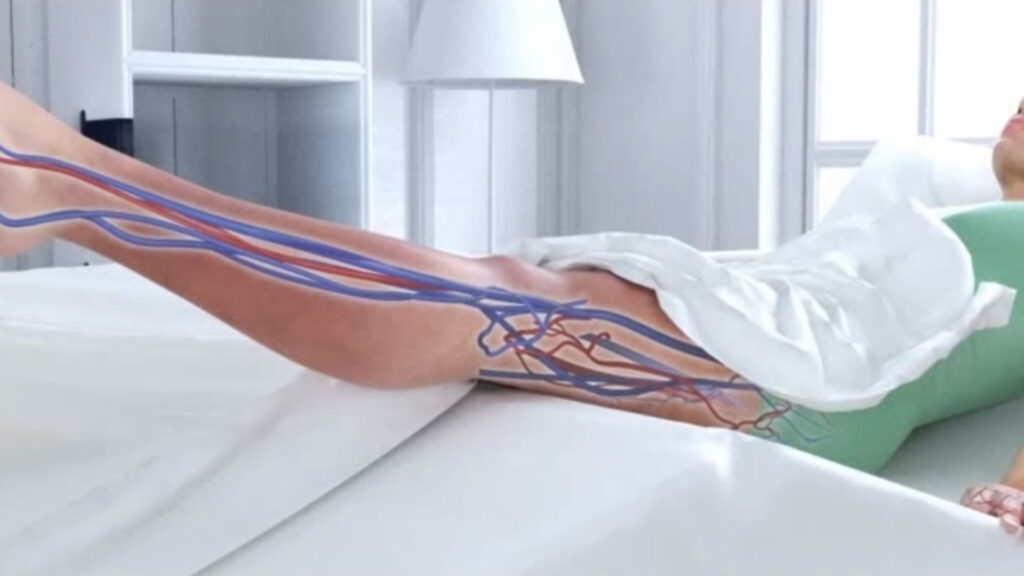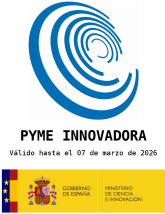Medical and Pharmaceuticals

Within the medical and pharmaceutical sectors, intensive technologies such as Virtual Reality in Medicine and Augmented Reality in Medicine are being applied with increasing frequency.
Simulators for different operations aimed at surgical training are among the most prominent uses of virtual reality in medicine.
Simulators
Within these simulators, which serve as safe environments, users can practise positions, become familiar with the instruments used in each case, and develop technical abilities and skills as if they were in a real-life situation, but with no risks should any issue arise.
With the applications of virtual reality in medicine, we provide this sector with intensive tools to save on logistics and physical training costs. This is why VR can become a great ally of science.
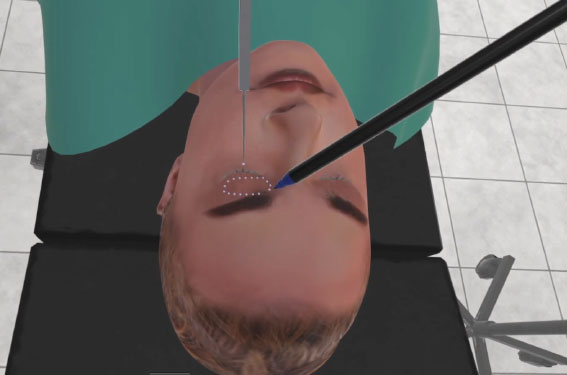

What is the use of virtual reality and augmented in medicine?
The use of AR in medicine encompasses various fields and uses. Notably, using AR can provide medical professionals with advanced diagnostic tools within safe environments.
VR in medicine
With VR in medicine, physicians can develop different applications for a variety of diseases in which they can simulate processes that users may respond to differently.
Therefore, the use of virtual reality applications in medicine can go far beyond training and visualizing 3D forms to provide useful tools for treating diseases.
What are the uses of virtual reality in medicine?
In addition to its use in training, surgery, or drug design, virtual reality in medicine also makes telemedicine (monitoring, examinations, or remote patient operations) possible.
Telemedicine
Thanks to VR, a surgeon at a hospital can remotely operate a robot that will perform surgery in an operating room at another hospital. New technologies, as well as 5G and low latency, make it increasingly possible to use these technologies in remote and online operations.
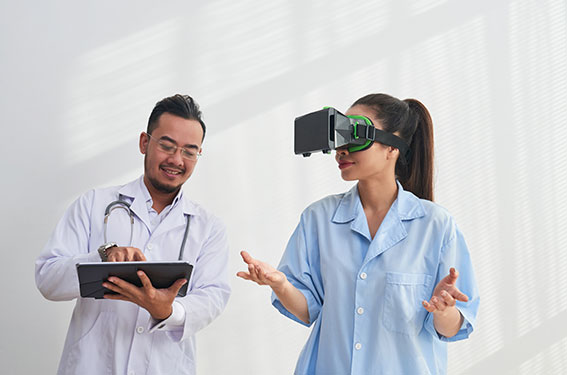
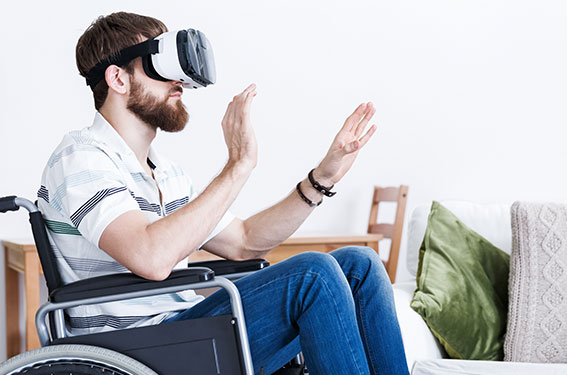
Applications of virtual reality in medicine
The most prominent applications of virtual reality in medicine include:
- Vocational and practical training for residents
- Operation simulators, different use cases
- Presenting products to the pharmaceutical sector, virtual visits to laboratories, showrooms
- Treatment of phobias such as psychological disorders, or irrational fears, that some people display when faced with certain situations or things. These can include, for example, animals, heights, blood, darkness, enclosed spaces, or public speaking.
- Virtual reality is intended to progressively expose patients to their fears in an artificial, safe environment in which the doctor can control the parameters.
Explaining a drug thanks to 3D technology
The main activity in the field of medicine is in drug creation. Once the process has been completed, drug producers need to be able to sell them. To do so, they must explain the characteristics and effects of the drugs. They can do this in different formats. Probably the most explanatory method is using 3D. Thanks to this technology, not only can drug producers present their products digitally, they can also show and explain how the product affects and acts inside patients through images.
Advertising spots as the main promotional channel
An advertising spot for a drug is something that we see every day in a variety of multimedia formats. Whether for television or for other formats where image is paramount, creating an advertising spot that reflects the ideas to be shared about the drug is indispensable in the campaign to market the drug.
Essential training for the use and application of a drug.
The pharmaceutical sector is made up of huge companies which, apart from having large staff sizes, have many customers to sell their products to. Nowadays, many of them have a trained employee who travels to healthcare centres to provide training on the products they are selling. In our connected world, more and more online platforms are being used where customers can access the necessary product information and receive training entirely online. For them, Dreamtech5 is able to develop these platforms and provide them with visual content in addition to being able to transform the information of the drug into highly educational written and multimedia material.

